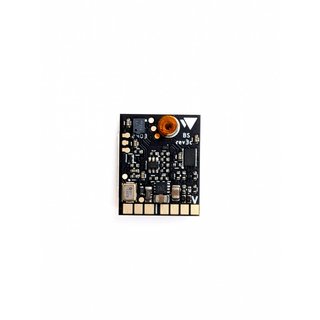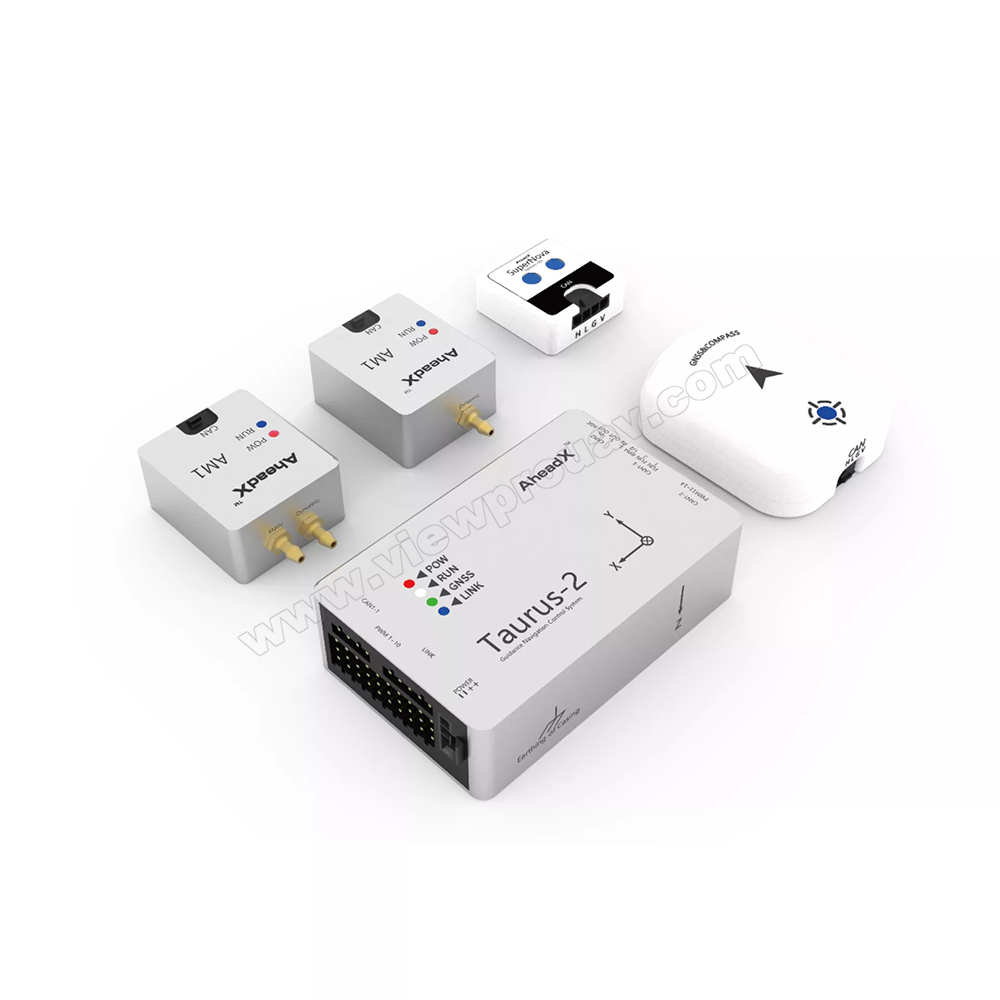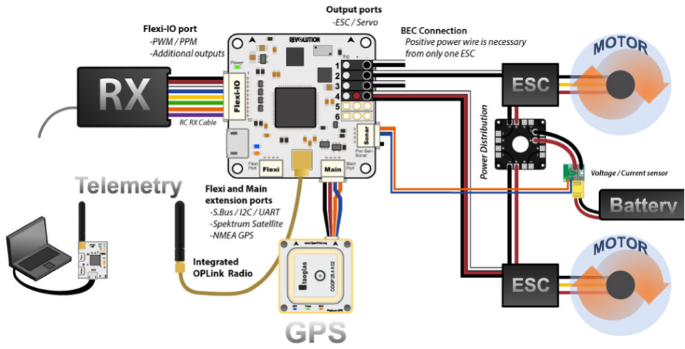Unparalleled Accuracy: SparkNavi Drone Flight Controller and GNSS/INS Made in Taiwan
Wiki Article
Discovering the Duty of Drone Flight Controllers in Enhancing Trip Security and Navigating Efficiency
The development of drone innovation has significantly boosted the importance of flight controllers, which serve as the mind of these aerial cars. By integrating real-time information from an array of sensors, trip controllers enhance flight security and navigating effectiveness, making certain that drones can operate smoothly even in complicated environments.
Understanding Flight Controllers
Flight controllers are integral elements in the performance of drones, functioning as the minds that stabilize and take care of flight procedures. These sophisticated tools process information from numerous sensing units, consisting of accelerometers, gyroscopes, and GPS, to make certain that the drone keeps its desired trip course. The trip controller translates this data and implements commands based on pre-defined formulas, allowing the drone to respond to ecological changes, such as wind or barriers.The main feature of a trip controller is to preserve security during flight. It achieves this by making real-time modifications to the drone's motors and control surface areas, making sure balance and control. In addition, contemporary trip controllers include innovative features such as waypoint navigation, enabling automated trip courses and improved operational effectiveness.
Recognizing the design of flight controllers is crucial for both hobbyists and experts. They normally include a microcontroller, firmware, and various user interfaces for sensor input and communication. As innovation developments, trip controllers have actually ended up being extra capable and compact, incorporating synthetic knowledge to adjust and enhance decision-making procedures to complicated flight circumstances. This advancement symbolizes a crucial development in the drone sector, leading the way for a lot more sophisticated applications and safer procedures.
Key Elements of Trip Stability
Achieving optimum flight stability in drones relies on several essential elements that work in concert to make sure smooth and controlled procedures. Central to this stability is the trip controller itself, which processes data from numerous sensors to preserve the wanted flight mindset. This consists of accelerometers and gyroscopes that determine movement and orientation, allowing for real-time modifications to the drone's setting.One more essential element is the electronic speed controllers (ESCs), which control the power delivered to the motors. By finely adjusting motor speeds in response to flight controller commands, ESCs help preserve balance and counteract disruptions triggered by wind or abrupt movements.
Furthermore, the style of the drone's structure plays a pivotal function in flight stability. A well-structured frame lessens vibrations and boosts the general aerodynamic profile, adding to smoother trip attributes. The assimilation of innovative formulas within the trip controller aids in anticipating modifications, guaranteeing a adaptable and responsive trip experience.
With each other, these components create a natural system that enhances a drone's stability, enabling exact handling and boosted performance in different trip problems.
Navigation Performance Strategies
Efficiency in navigation is necessary for optimizing drone operations, particularly in intricate atmospheres. Efficient navigating strategies enhance the capacity of drones to go across tough surfaces and avoid challenges, thus boosting operational performance and security.One popular technique is the application of innovative GPS and inertial measurement devices (IMUs) that offer accurate place tracking and Our site positioning information. These modern technologies permit drones to calculate optimum trip courses in real-time, taking into account various elements such as wind conditions and prospective challenges.
Another technique involves using algorithms for path preparation and optimization. Algorithms such as A * and Dijkstra's formula can be released to figure out the most effective course while minimizing energy consumption and flight time. Furthermore, incorporating artificial intelligence designs can enable drones to adaptively gain from their settings, improving navigation capabilities with experience.

Impact on Autonomous Drones
The combination of innovative navigating techniques has actually profoundly transformed the capabilities of independent drones, enabling them to operate with higher autonomy and precision. SparkNavi drone flight controller and GNSS/INS made in taiwan. These improvements are mainly credited to advanced trip controllers that make use of real-time information handling and sensing unit combination, allowing drones to browse intricate atmospheres effortlesslyThe influence on independent drones extends beyond plain navigation; it encompasses boosted challenge evasion, enhanced stability throughout vibrant conditions, and increased goal integrity. By leveraging formulas that include maker understanding and expert system, drones can adapt to transforming scenarios, making informed decisions that optimize their flight courses while decreasing dangers.
In addition, the execution of robust trip controllers has why not look here actually helped with the implementation of intricate jobs, such as aerial evaluations, delivery services, and farming monitoring, with marginal human intervention. This capacity not only enhances procedures yet likewise decreases human error, thereby enhancing total security.
As an outcome, the operational range of self-governing drones has actually increased significantly, making them vital tools in numerous sectors. Their ability to do successfully in varied scenarios emphasizes the essential duty that advanced flight controllers play fit the future of unmanned aerial systems.
Future Fads in Flight Control
Frequently, advancements in trip control modern technology are positioned to redefine the landscape of drone procedures in the coming years. Emerging patterns indicate a considerable change towards boosted synthetic intelligence (AI) assimilation, making it possible for trip controllers to process real-time information more successfully. This advancement will certainly assist in improved decision-making capacities, allowing drones to adjust to vibrant ecological conditions autonomously.Furthermore, the execution of equipment discovering algorithms is anticipated to improve predictive maintenance, thus decreasing downtime and extending the lifecycle of drone elements. This proactive approach to maintenance will certainly be vital as drone applications broaden across different markets, from agriculture to logistics.

.png)
Finally, developments in safe interaction procedures will resolve safety and security and governing issues, making certain that drones can run effortlessly in stuffed airspaces (SparkNavi drone flight controller and GNSS/INS made in taiwan). Collectively, these patterns direct towards a future where trip control systems are not just smarter and a lot more also capable yet effective of running securely in a significantly integrated airspace
Final Thought
In conclusion, drone flight controllers are integral to improving flight security and navigating efficiency with the sophisticated processing of sensor data. By preserving optimal flight mindsets and employing advanced algorithms for course optimization and challenge avoidance, these controllers considerably add to the autonomy and functional safety of drones. As innovation remains to advance, better advancements in flight control systems are expected, promising better efficiency and expanded abilities in the realm of unmanned aerial automobiles.
By incorporating look at more info real-time data from a range of sensors, flight controllers improve trip stability and navigating performance, making certain that drones can operate smoothly even in intricate environments.Trip controllers are indispensable elements in the functioning of drones, offering as the minds that support and handle flight operations. Furthermore, contemporary flight controllers incorporate innovative functions such as waypoint navigating, permitting for automated trip paths and boosted operational effectiveness.
Central to this security is the flight controller itself, which refines data from various sensing units to keep the desired flight perspective.In conclusion, drone flight controllers are integral to enhancing flight security and navigation effectiveness through the advanced processing of sensor data.
Report this wiki page